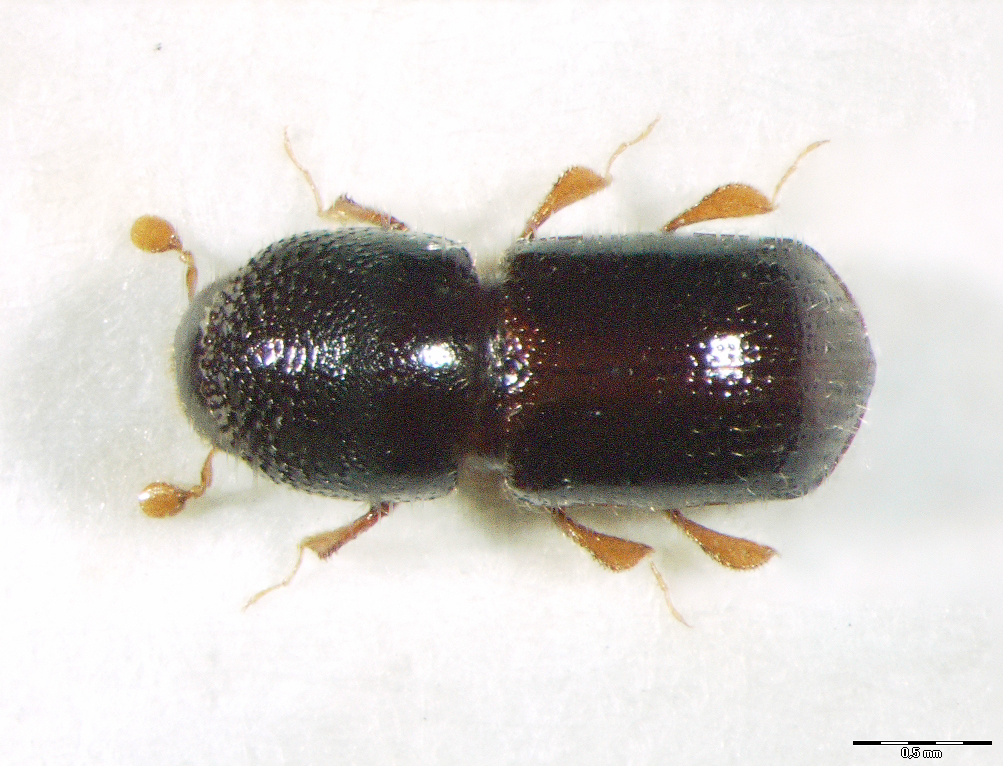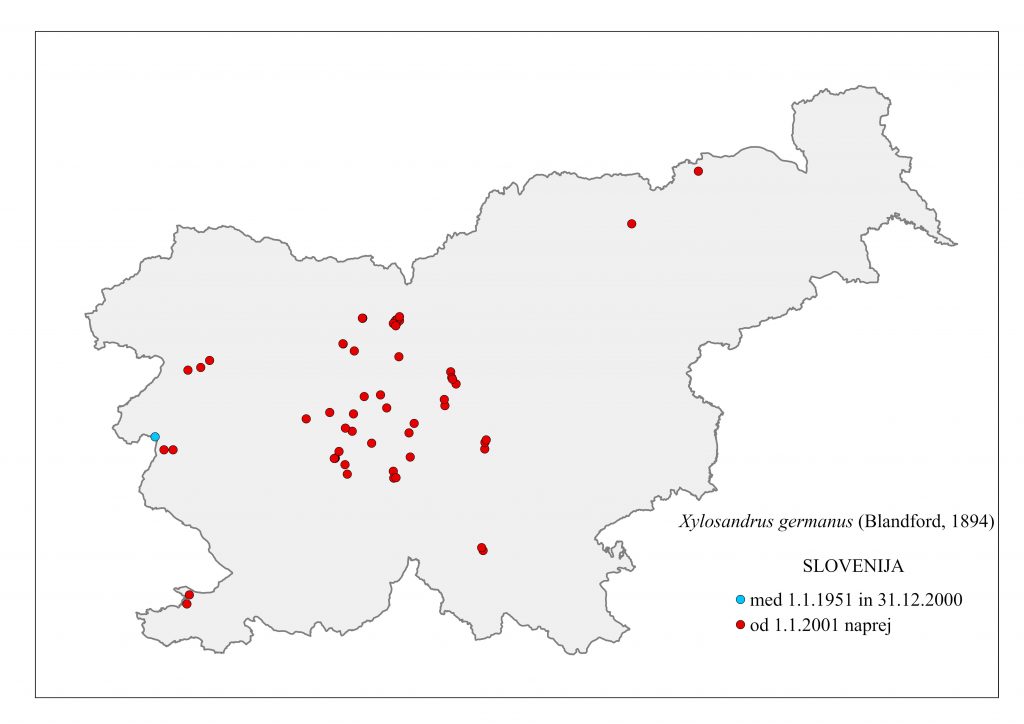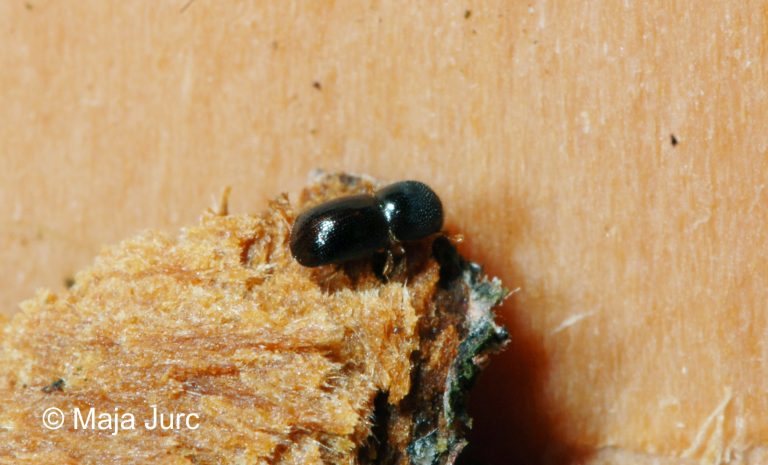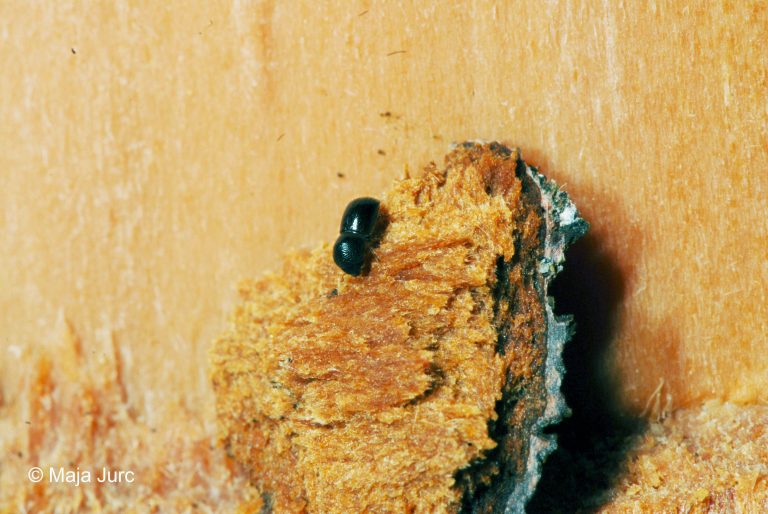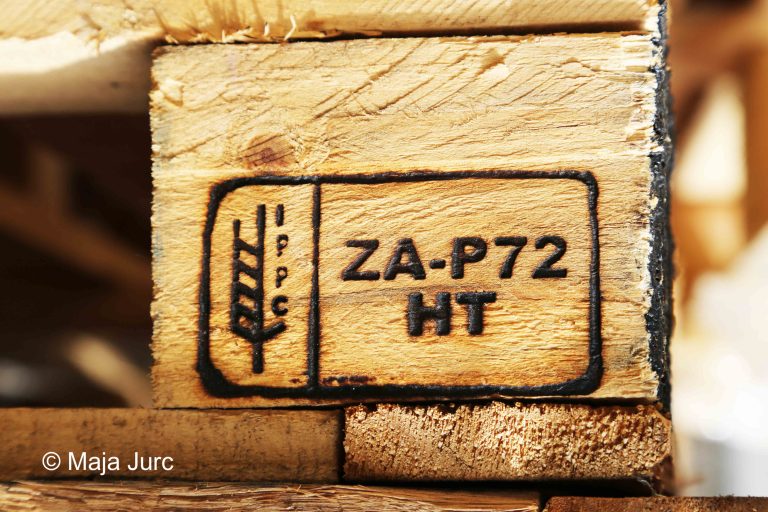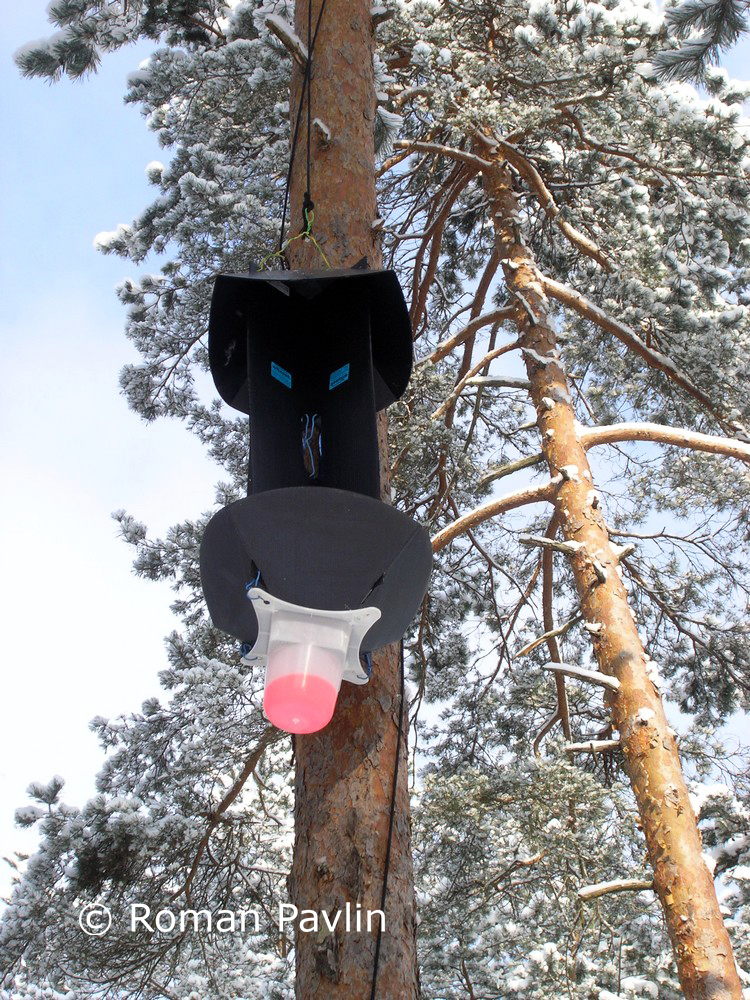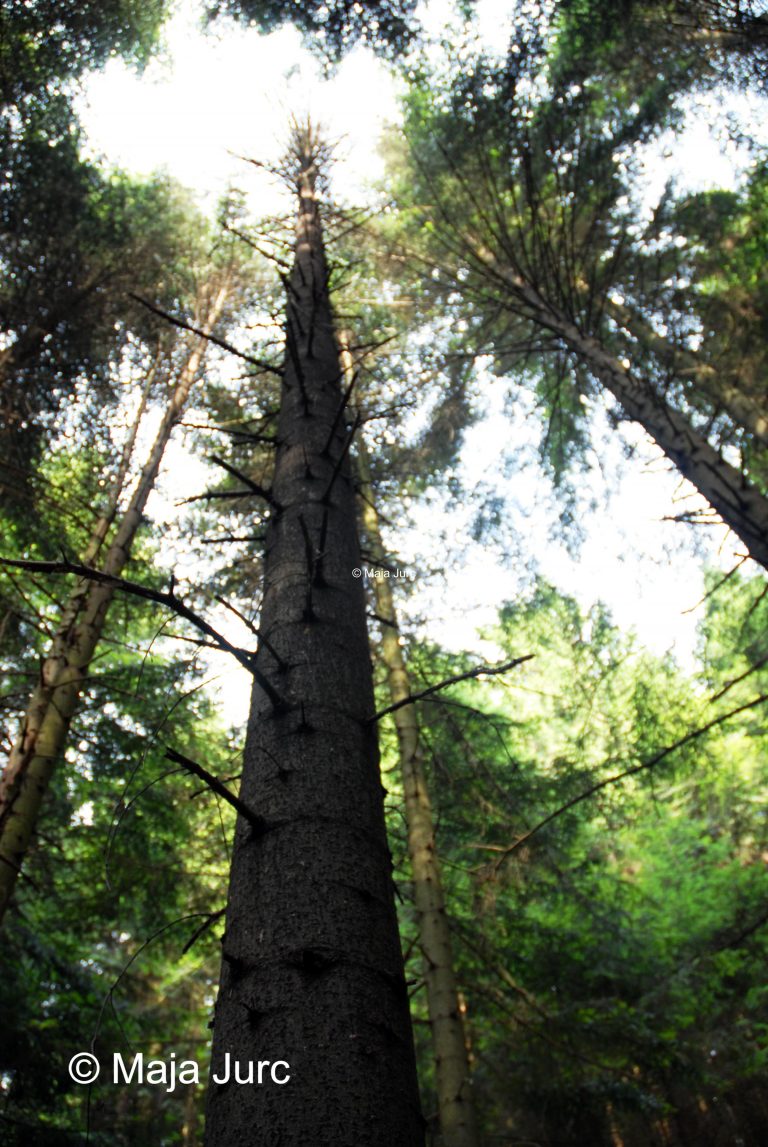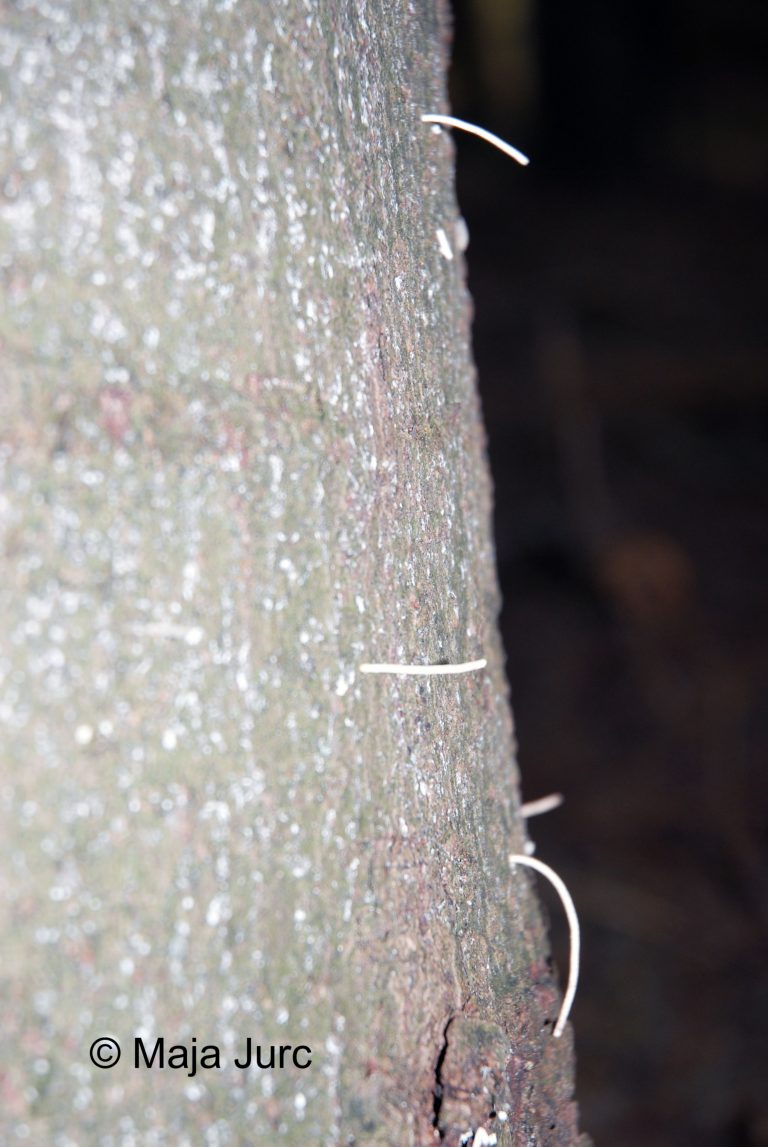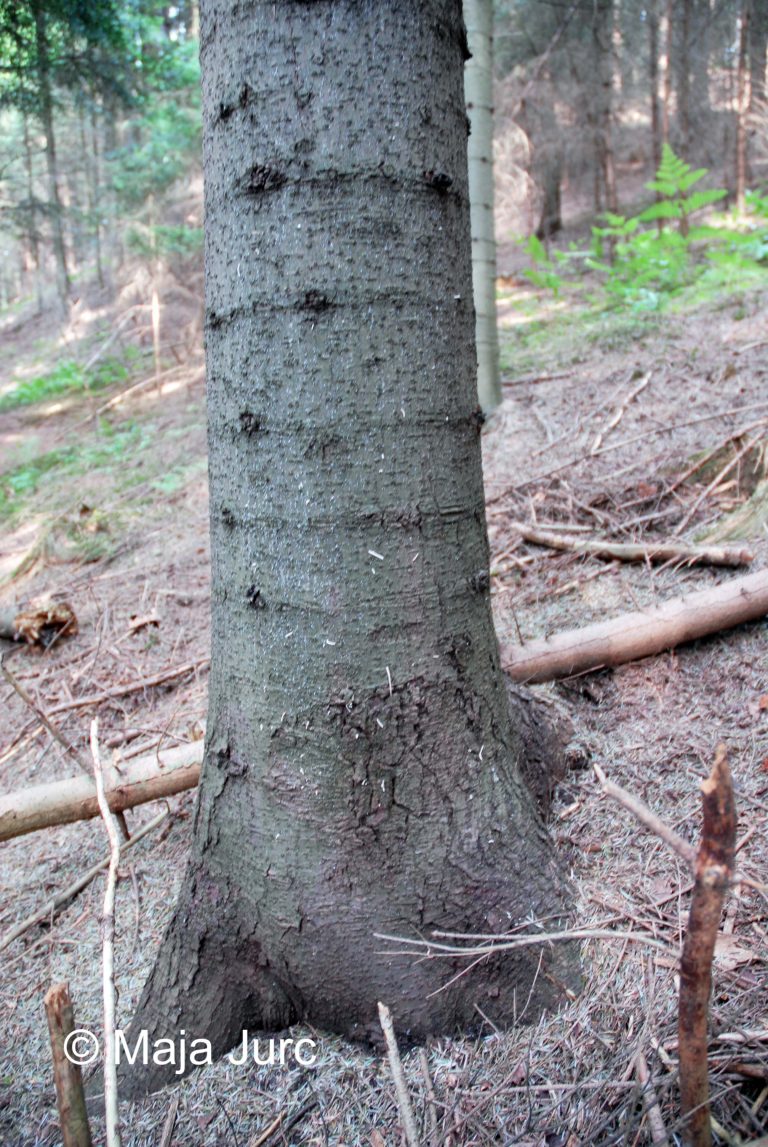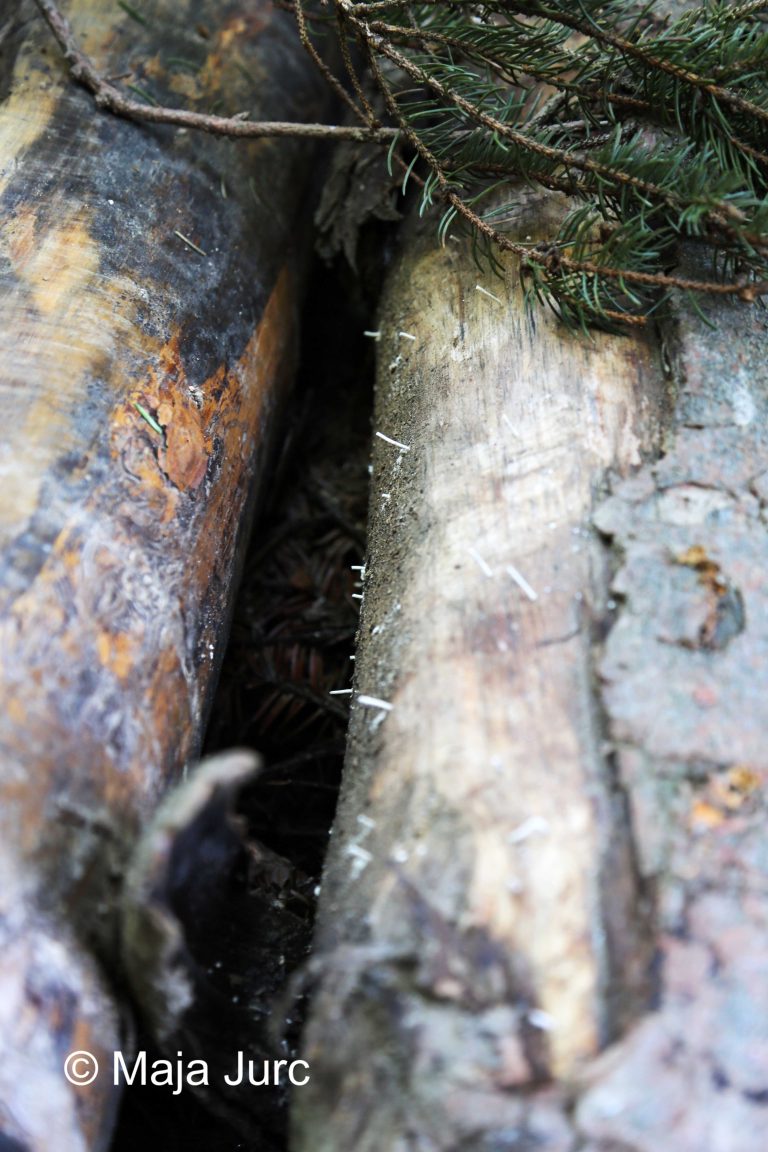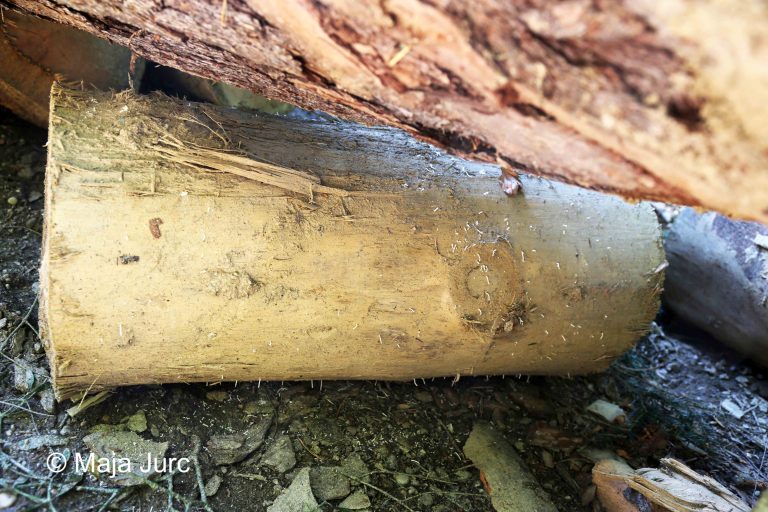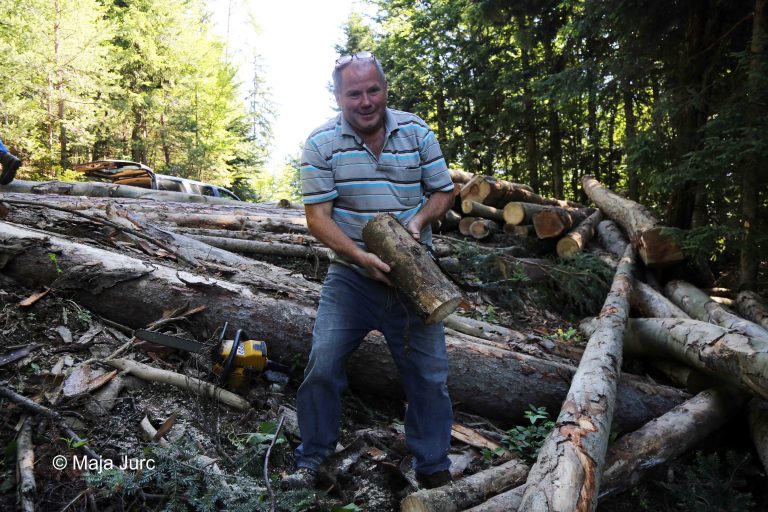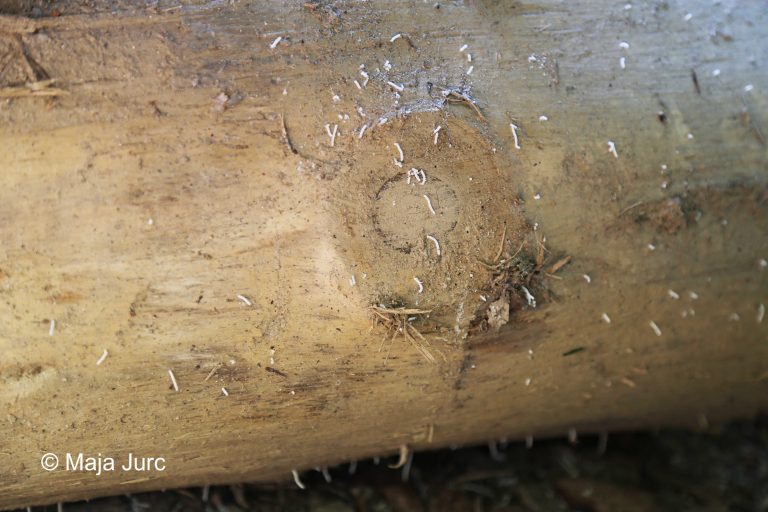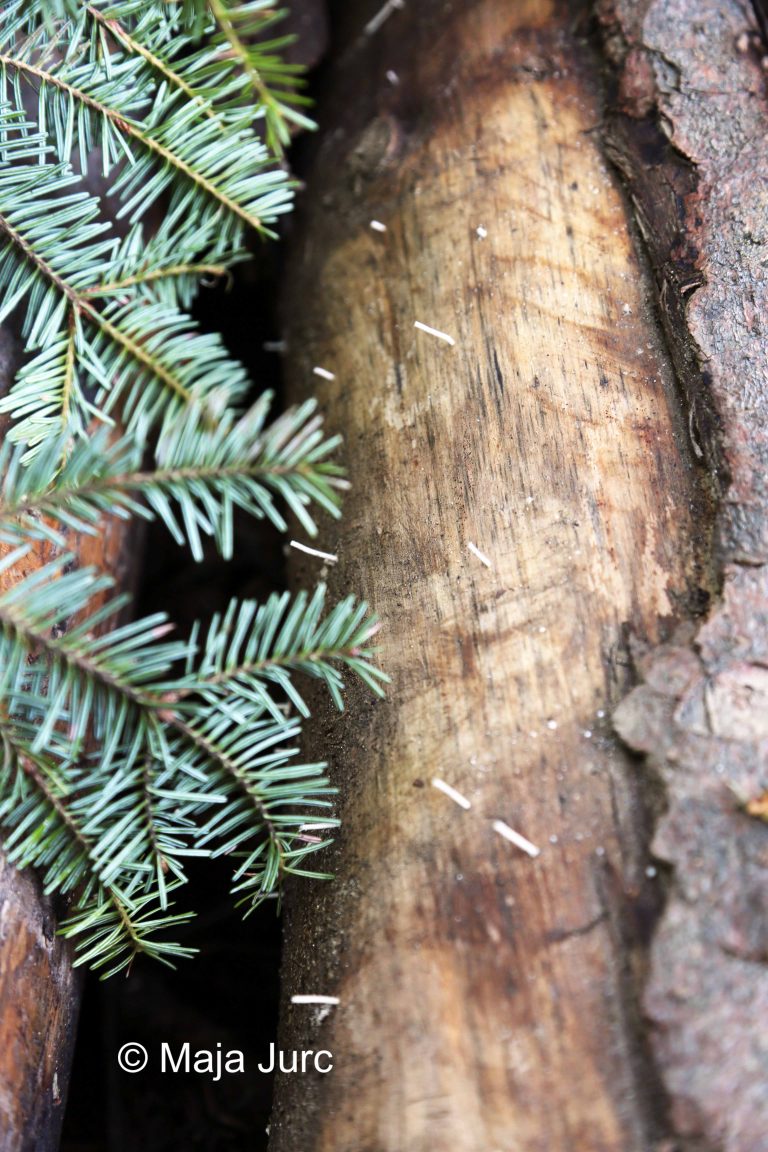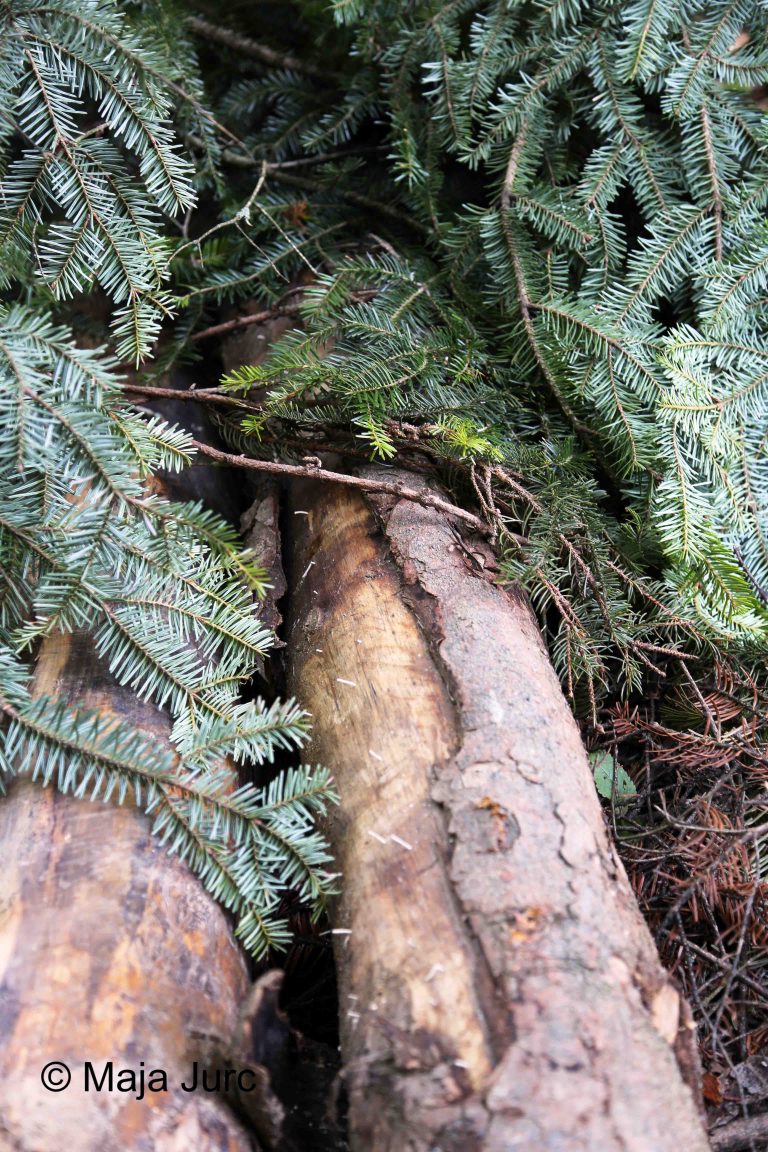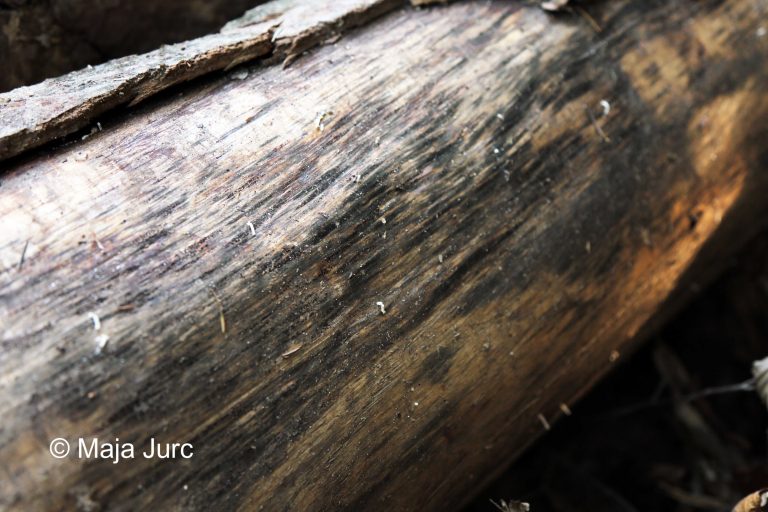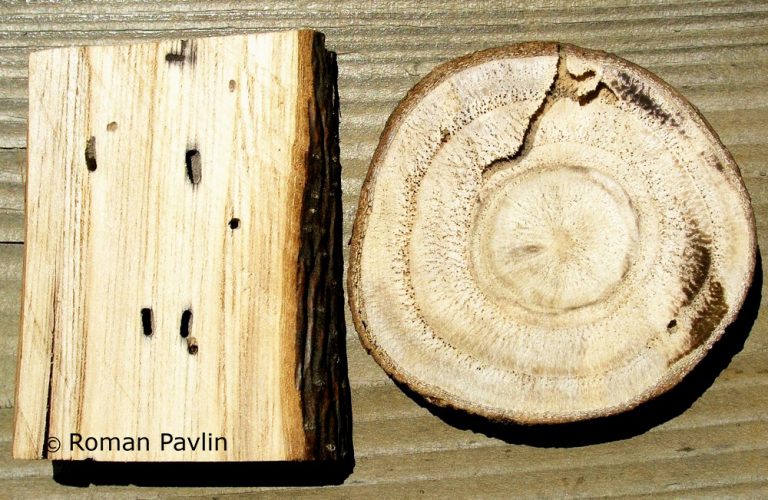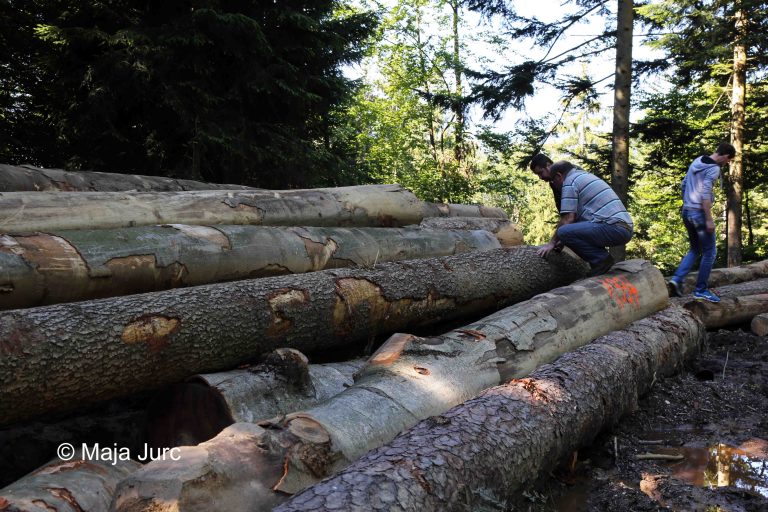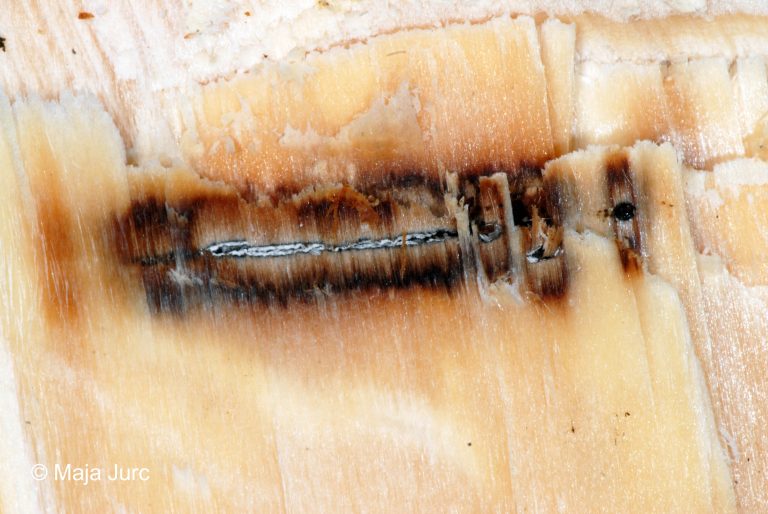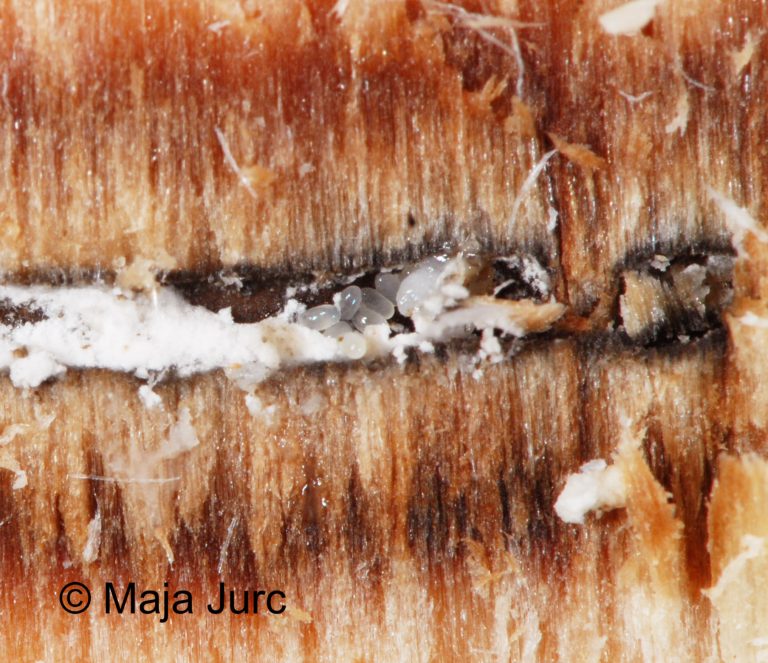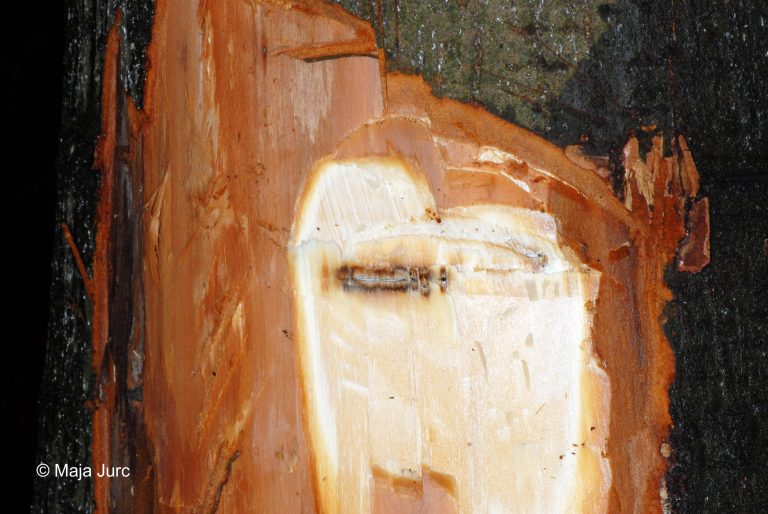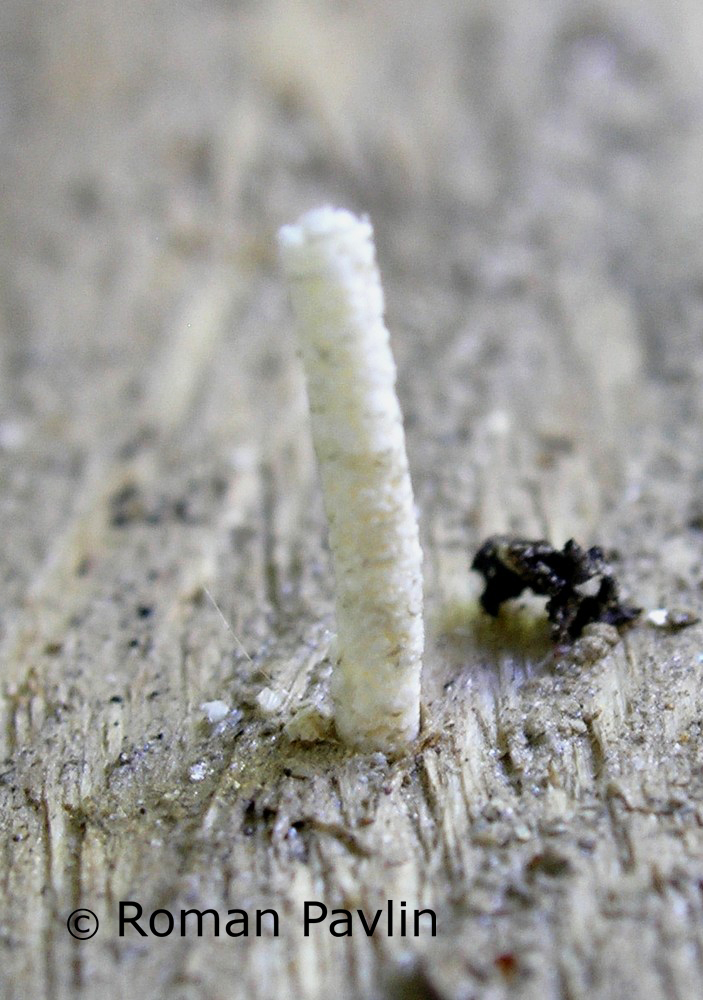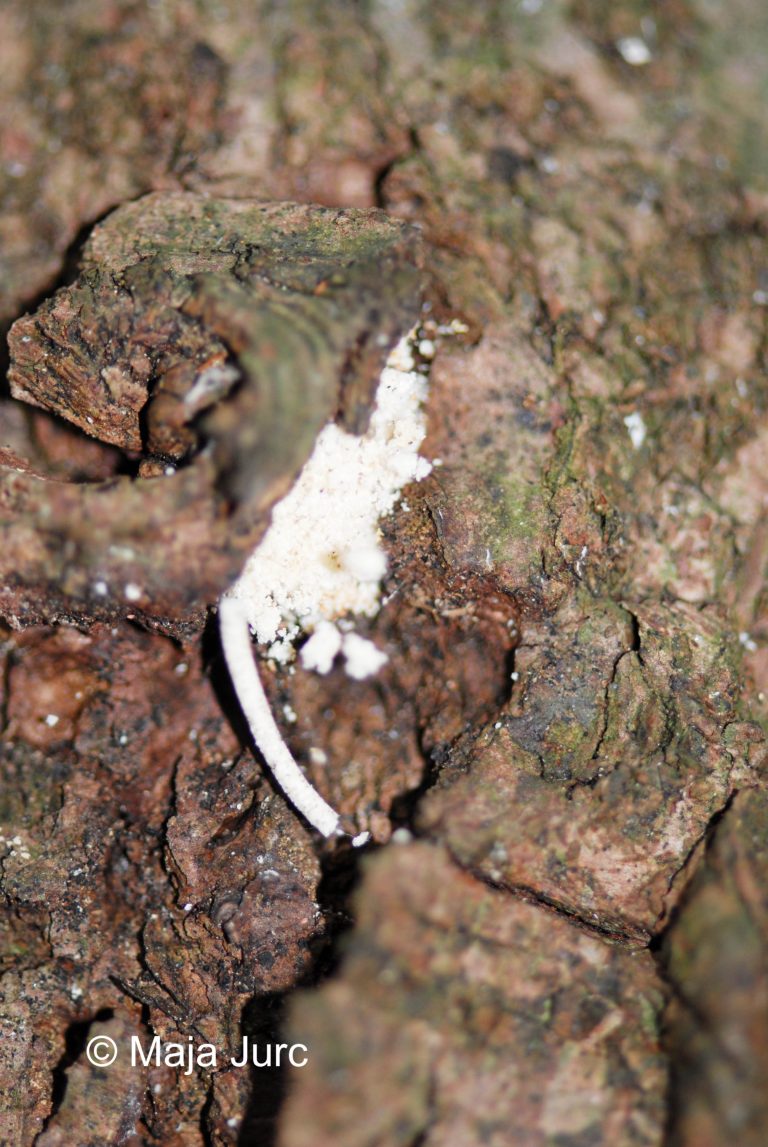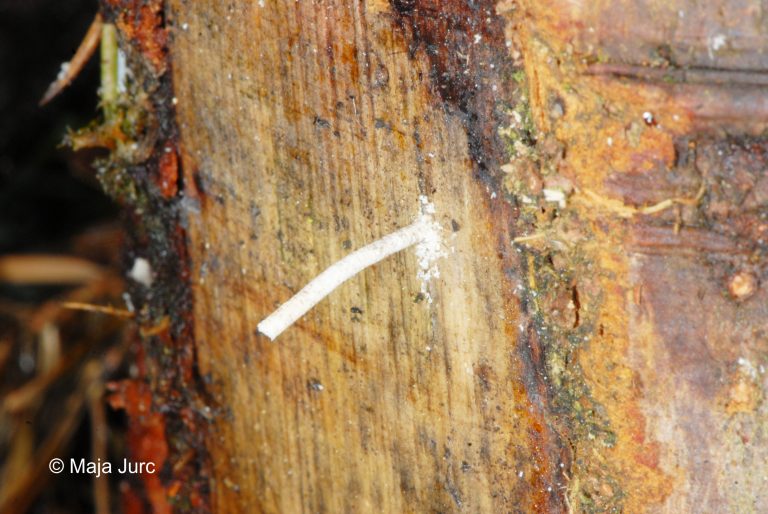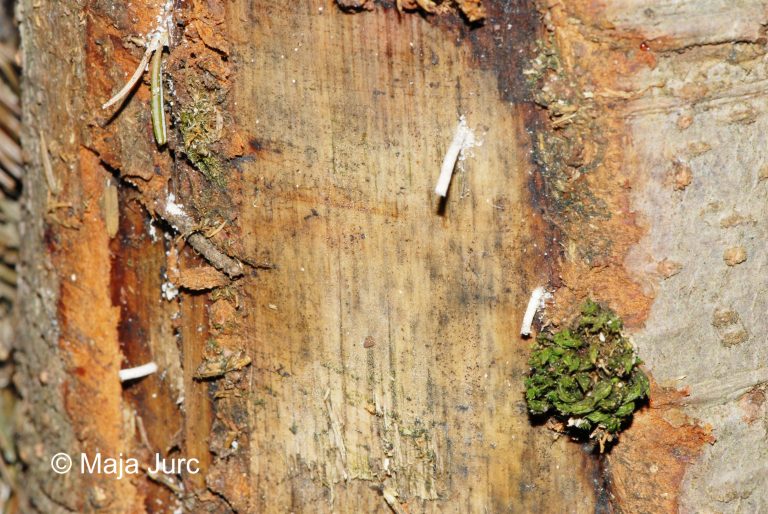38.02. Xylosandrus germanus (Blandford, 1894)
Presence
E: AU BE CR CZ FR GE GG HU IT NL SL* SP ST SZ
A: ANH FE FUJ GUA GUI GUX HAI HEN HUB HUN JA NC SC SCH SHA SHX TAI TR XIZ YUN ZHE
NAR
ORR
Figure 182: Xylosandrus germanus, dorsal, lateral (Photo: Maja Jurc)
Older catalogs and keys – citations of name
Grüne 1979: Xylosandrus germanus Blandford, 1894; Freude, Harde, Lohse 1981: Xylosandrus germanus Blandford; Pfeffer & Knížek 1993: Xylosandrus germanus (Blandford, 1894); Pfeffer 1995: Xyleborus germanus Blandford, 1894.
Figure 183: Xylosandrus germanus, distribution map according to historical and recent data
Ecology and presence in Slovenia
A non-native East Asian species first described in Japan, it was later introduced into the USA, and after World War II into Western Europe (Germany, France, Belgium, western Switzerland). Today, the species is also common in Austria, Croatia, the Czech Republic, Hungary, Italy, the Netherlands, Spain, the southern part of the European area of Russia, Asia, the Nearctic and Oriental regions. The species was first found in Slovenia in 2000 at Sabotin, and many more recent trap records indicate that it is widespread and common throughout Slovenia, with the exception of Prekmurje, Koroška and Bela Krajina (Figure 183). X. germanus is a polyphagous species on hard deciduous trees, less frequently on conifers. Hosts include Quercus robur, Q. petraea, Q. rubra and Fagus sylvatica, less frequently Betula pendula, Alnus glutinosa, Carpinus betulus, Ulmus laevis, Acer pseudoplatanus, Robinia pseudoacacia, Picea abies, Pinus strobus, P. densiflora, P. pentaphylla, Abies alba, Juglans spp, Prunus cerasus and Prunus spp.. The species has been recorded in Slovenia on Castanea sativa, Fagus sylvatica, Quercus petraea, Abies alba and Picea abies. Xylomycetophagous species, develops 1-2 generations per year, swarms in May. Inhabits mainly the middle and lower parts of the trunks of younger trees with smooth bark. It has a familial planar tunnel system (similar to Xylosandrus crassiusculus), from which it extrudes light-coloured droppings in the form of protruding rod-shaped structures 2-3 cm long. The length of the adultus is 1,0-1,8 mm. The imagi are light to dark brown, with an oblique apex. The elytra are variably punctated, the antennae and legs are yellow (Figure 182). An ambrosia beetle, it introduces ectosymbiont fungi into its tunnel system.

